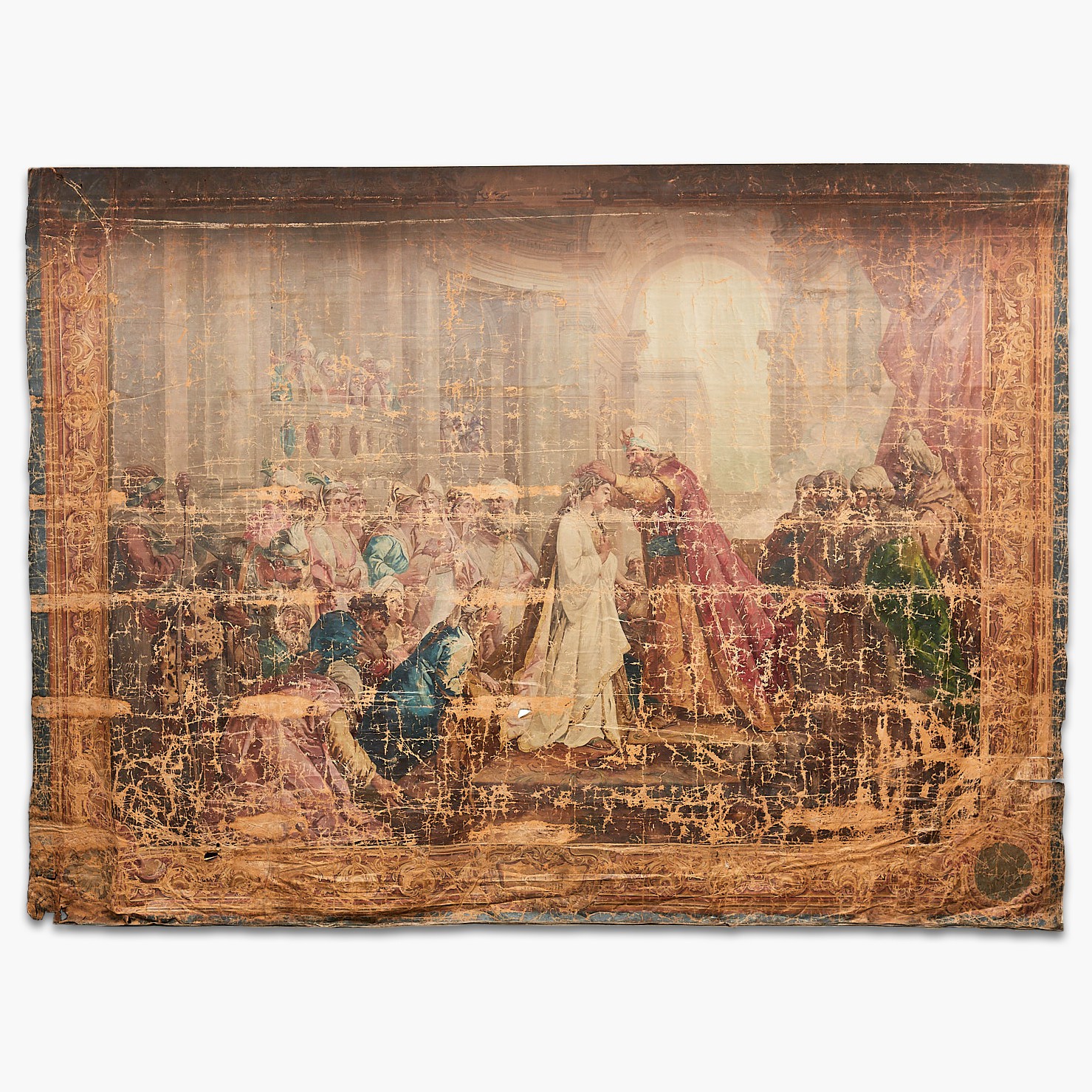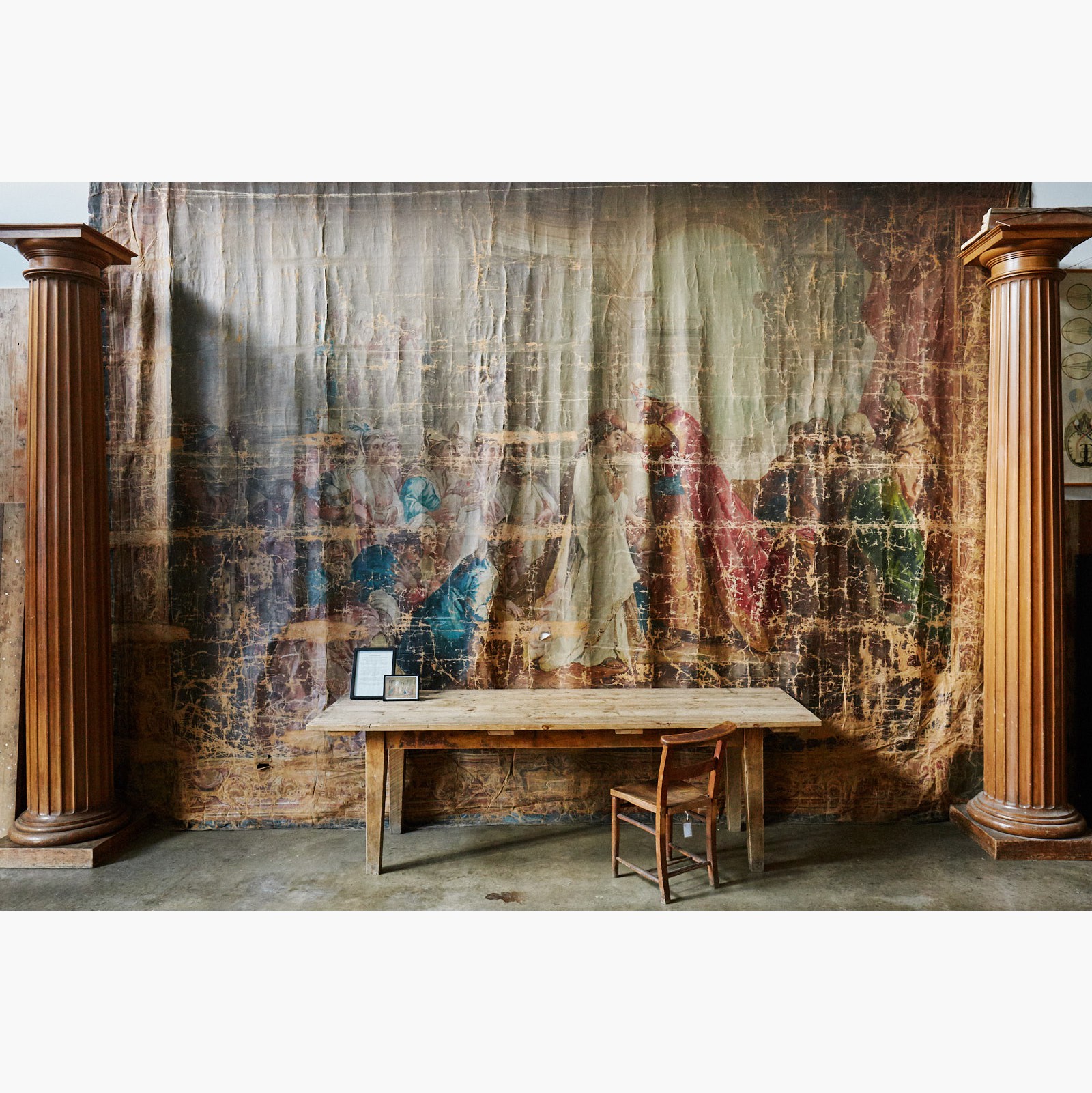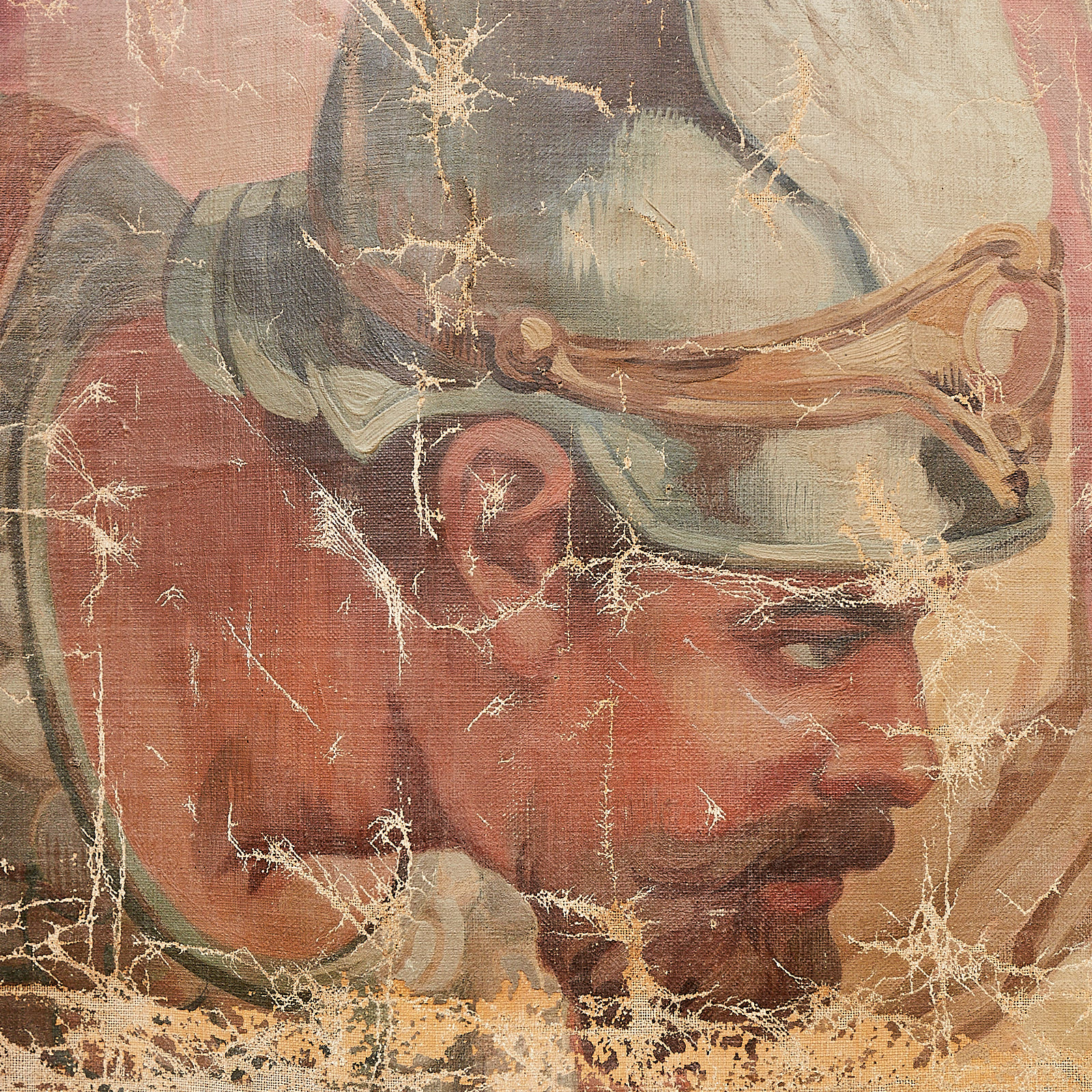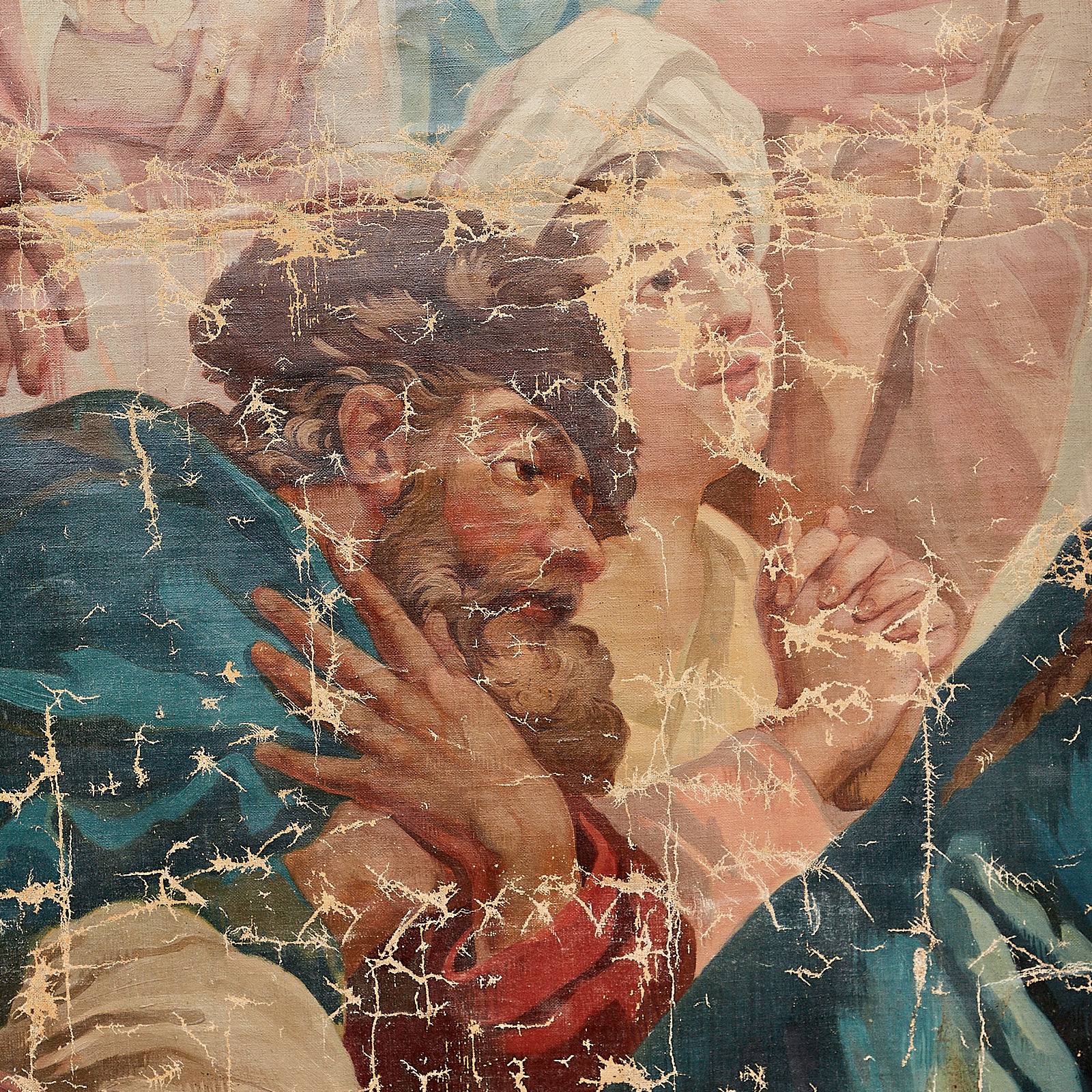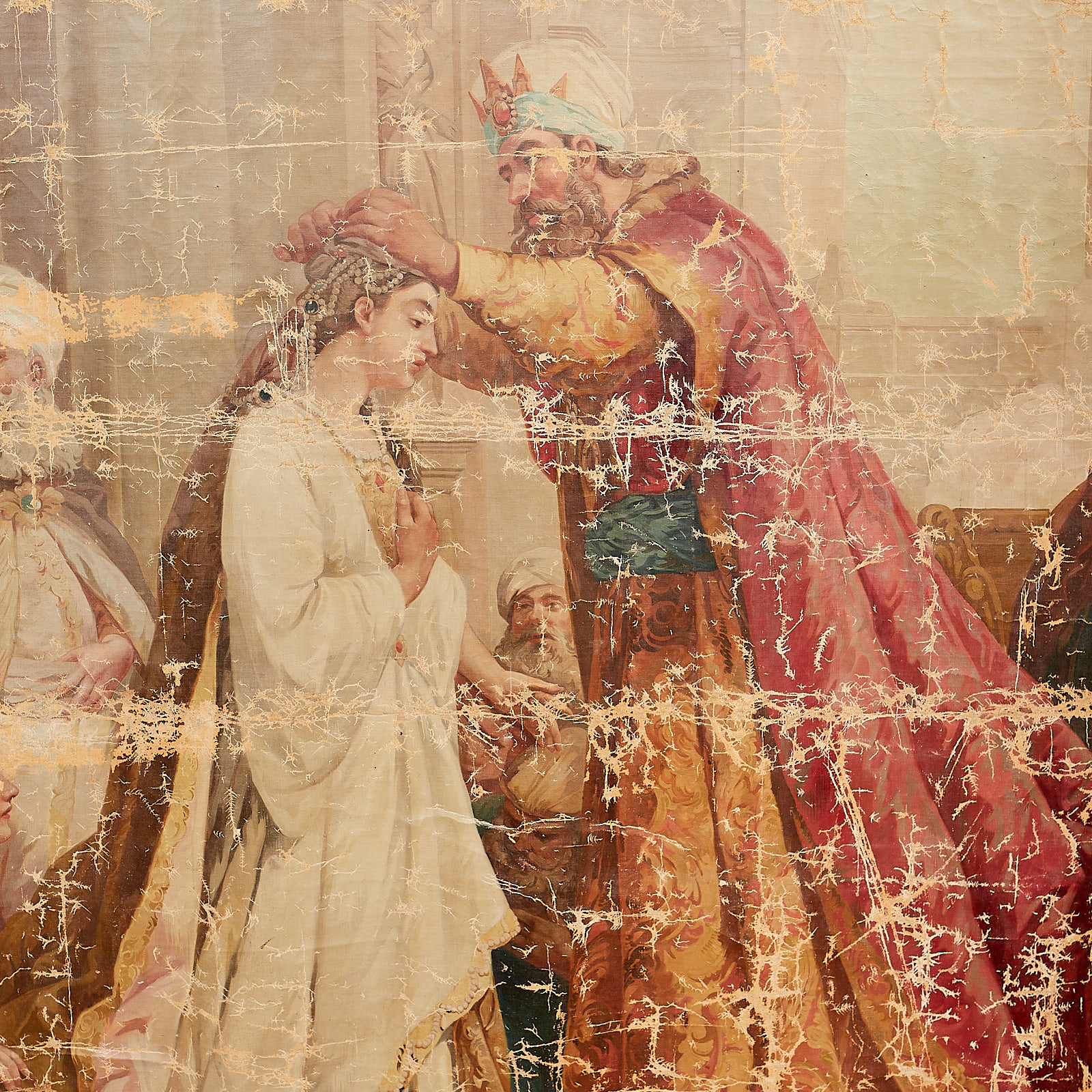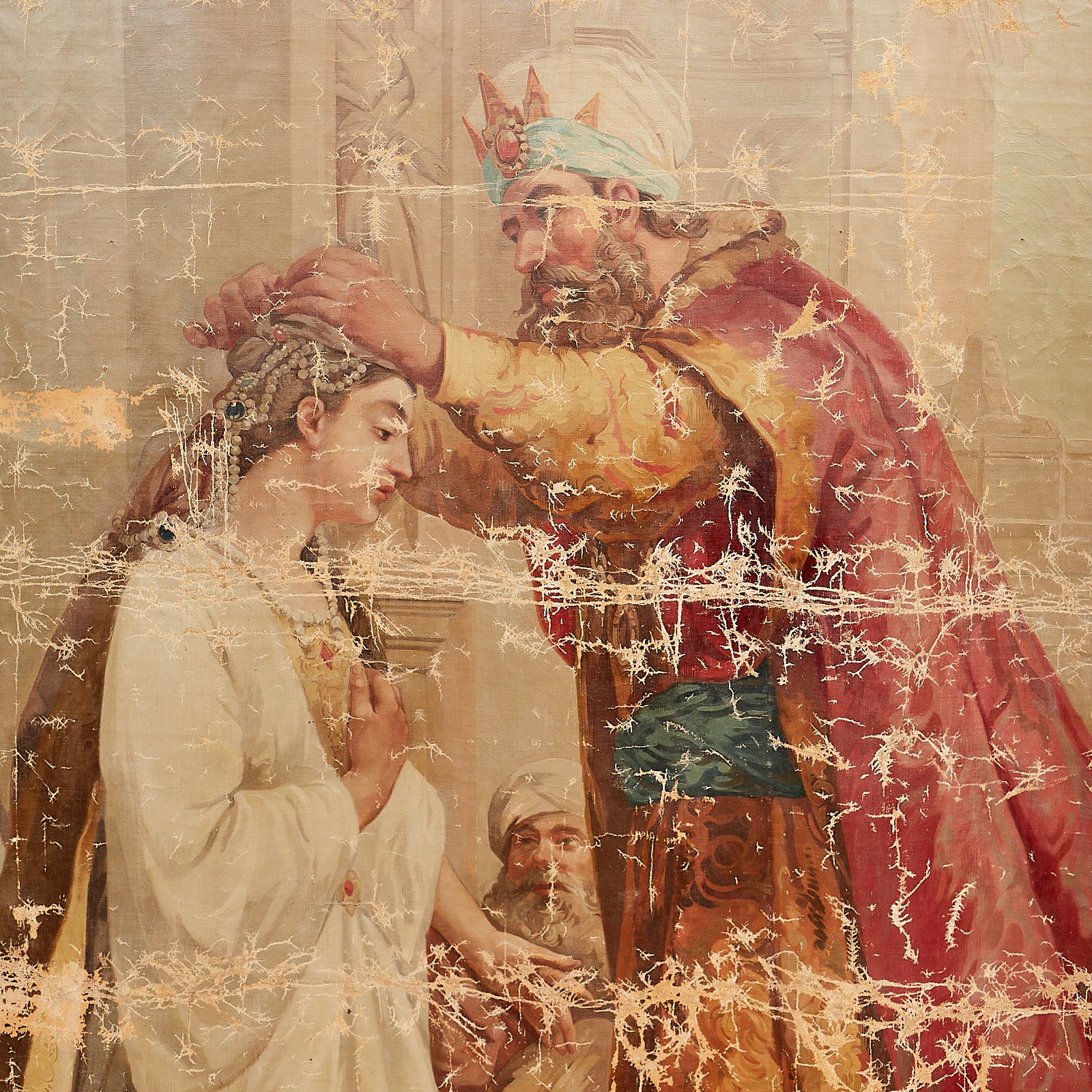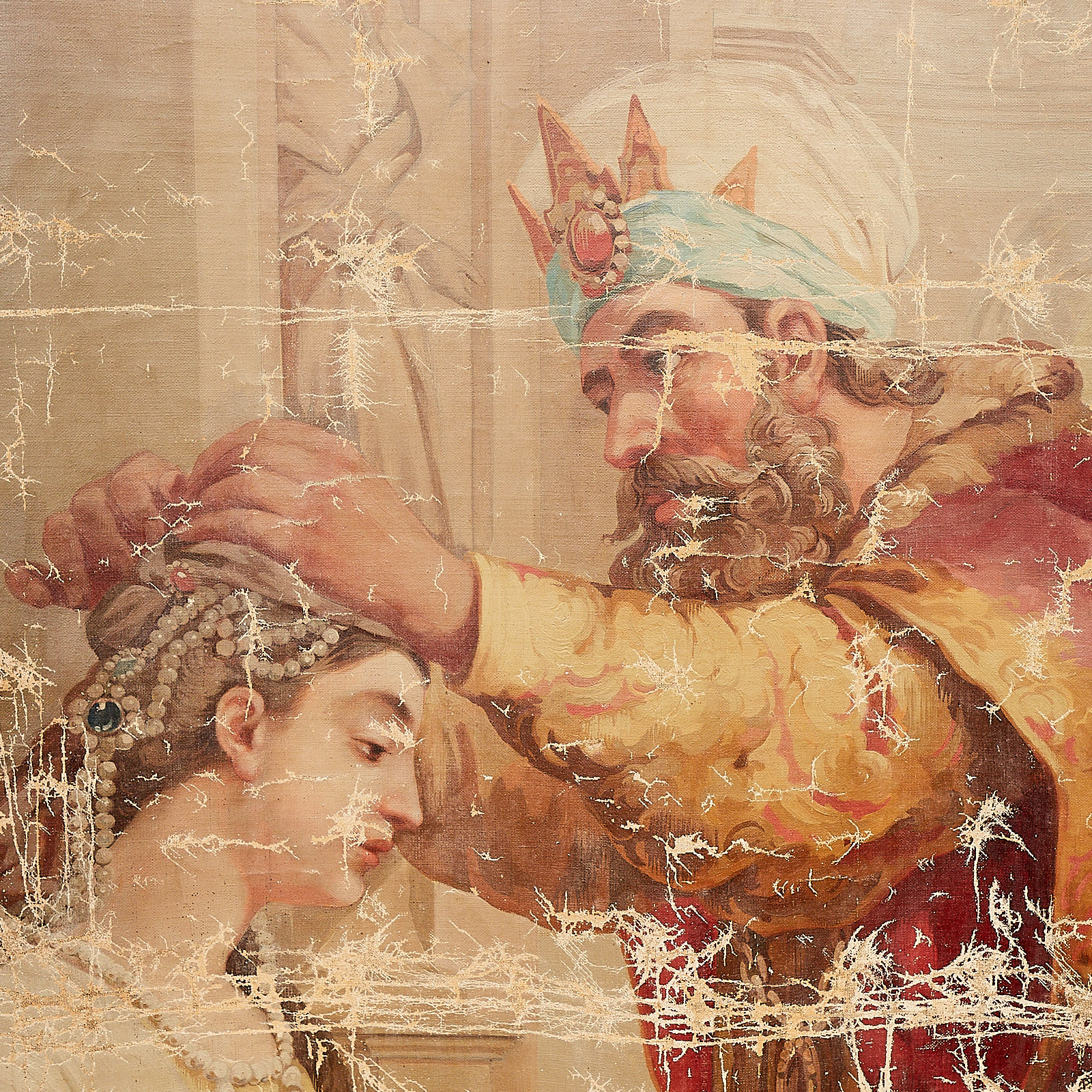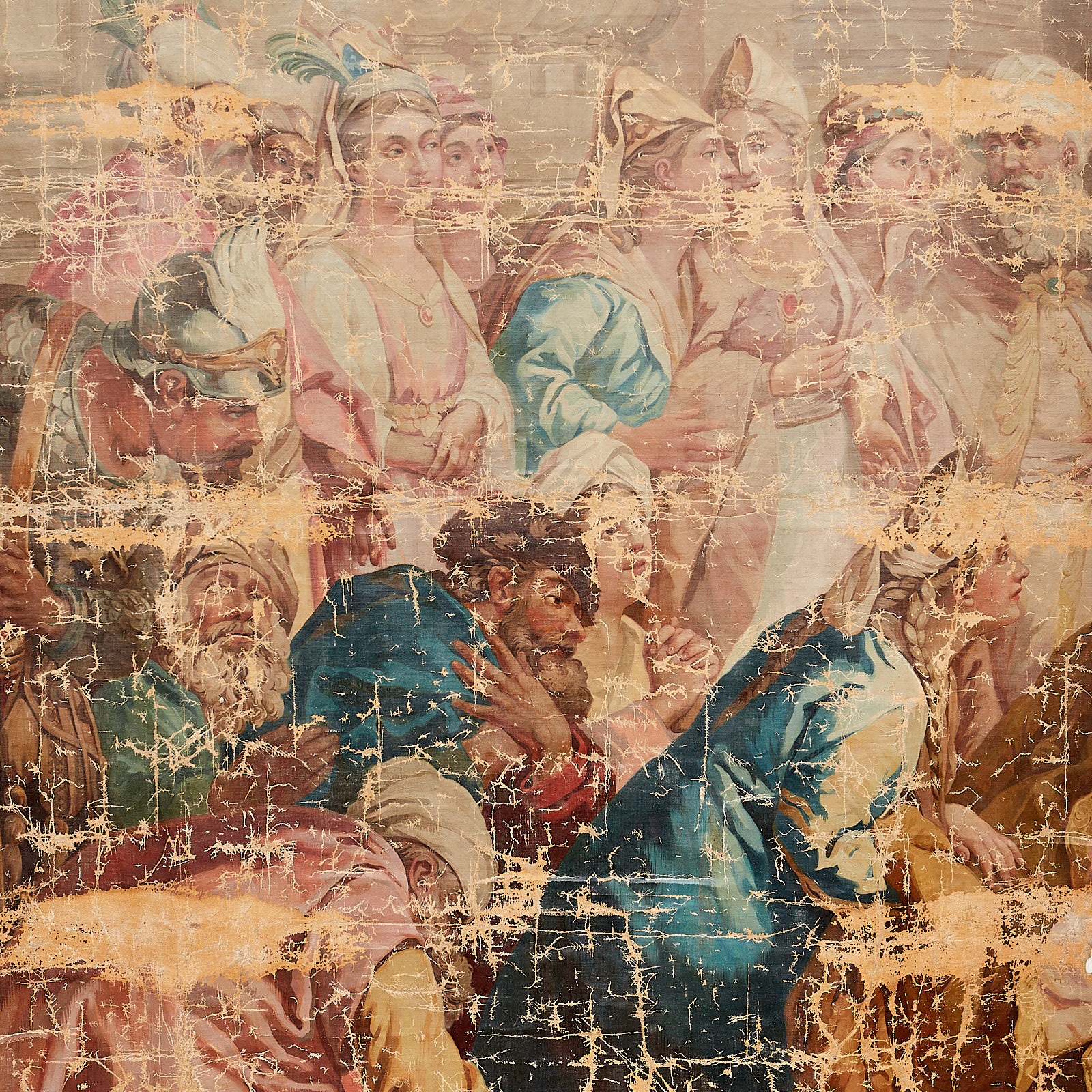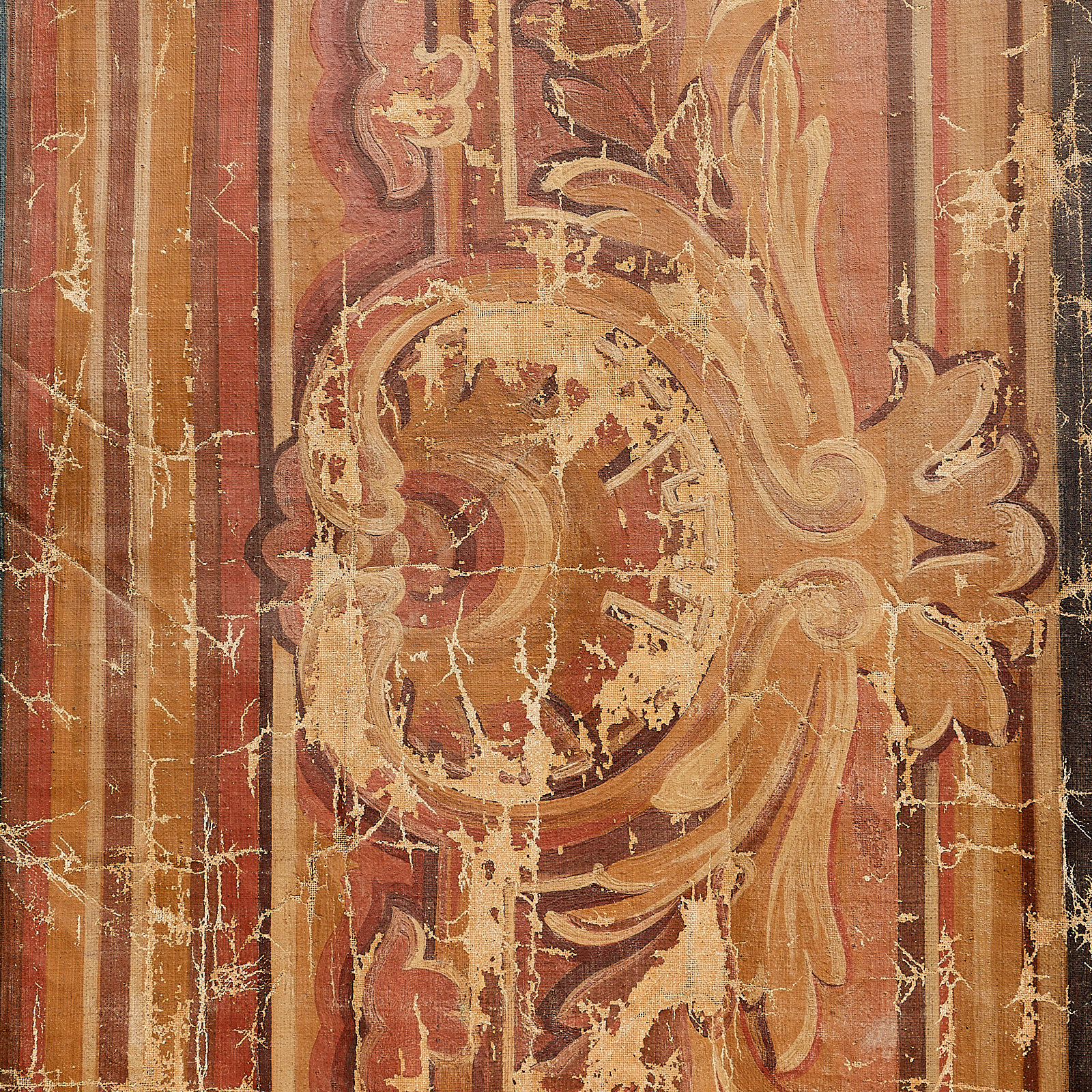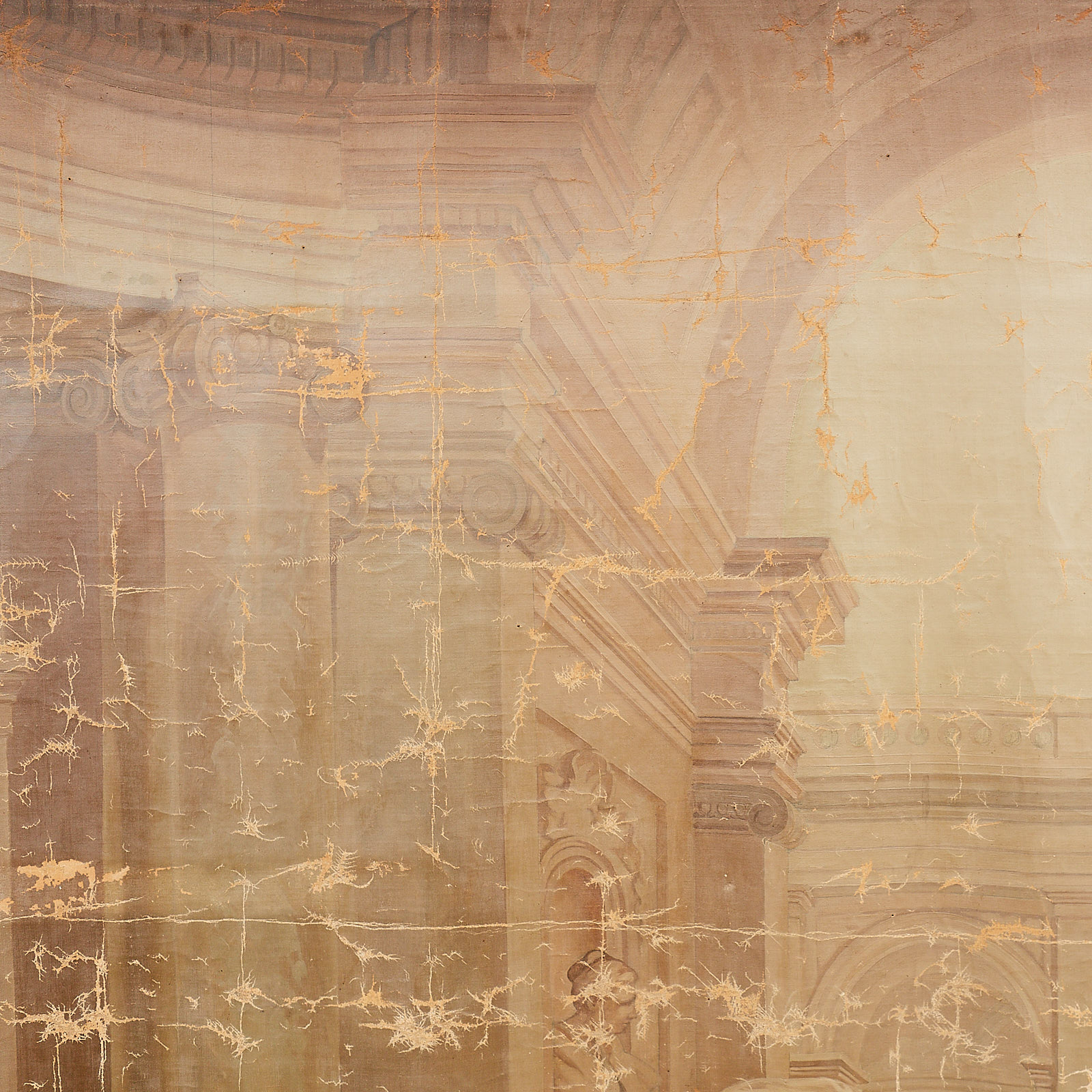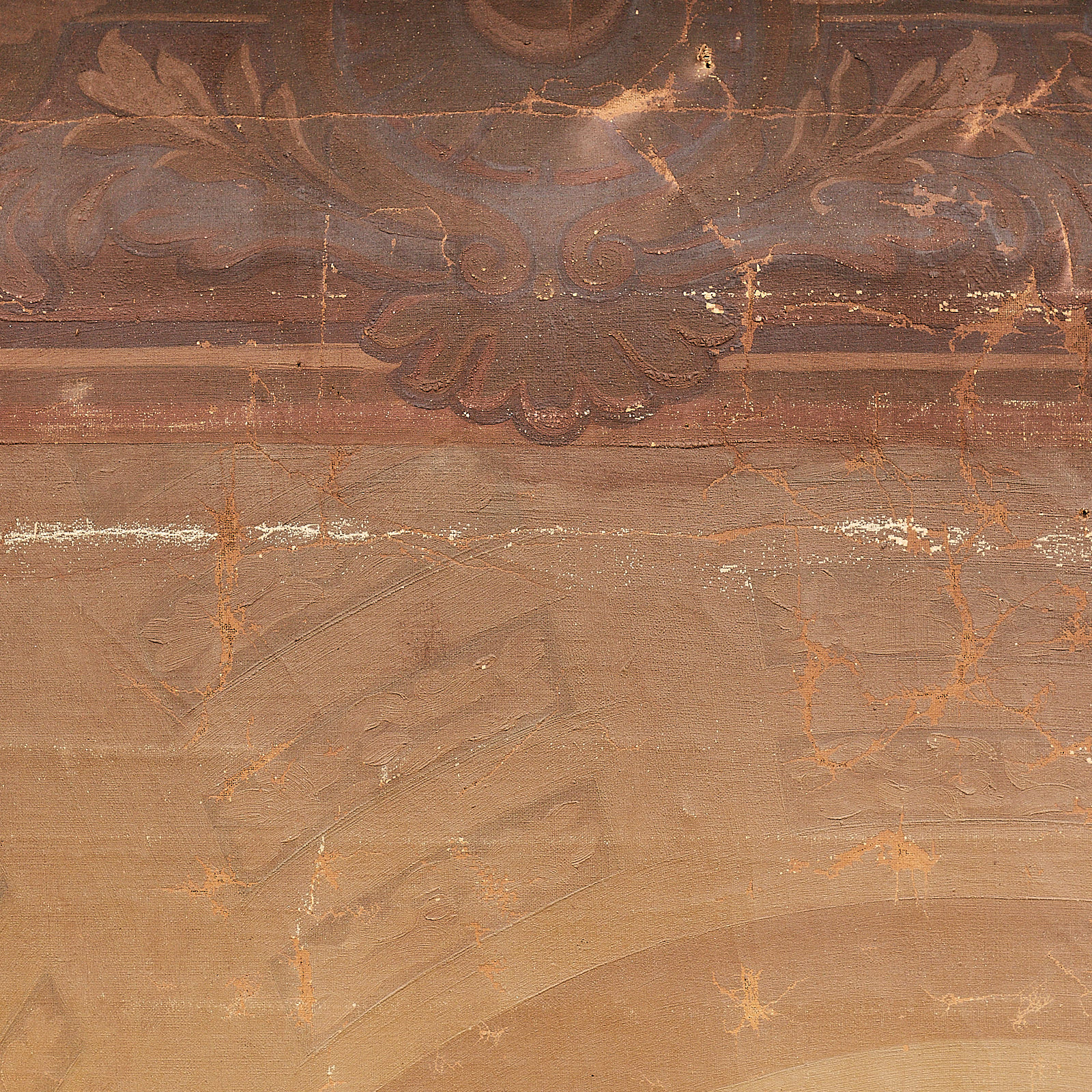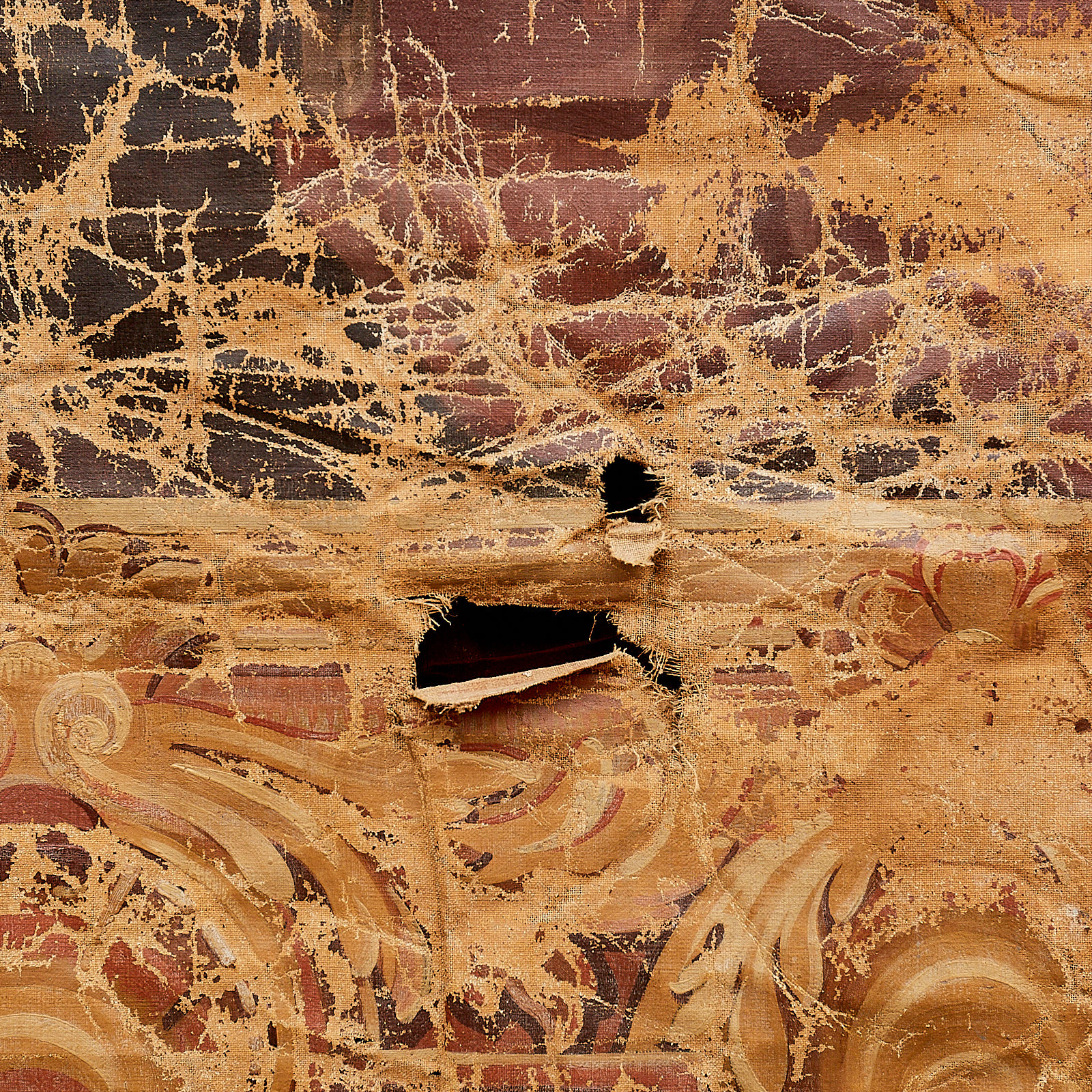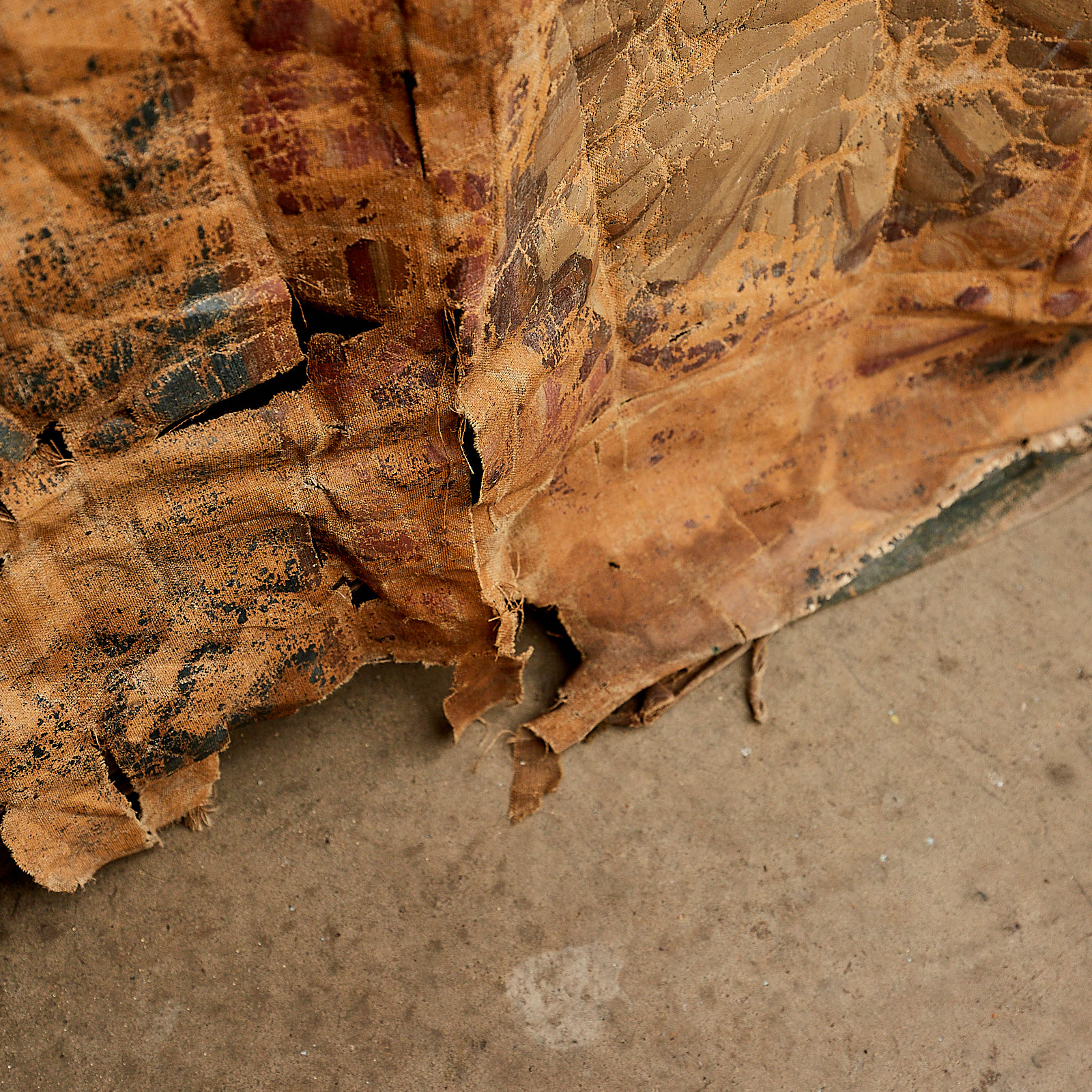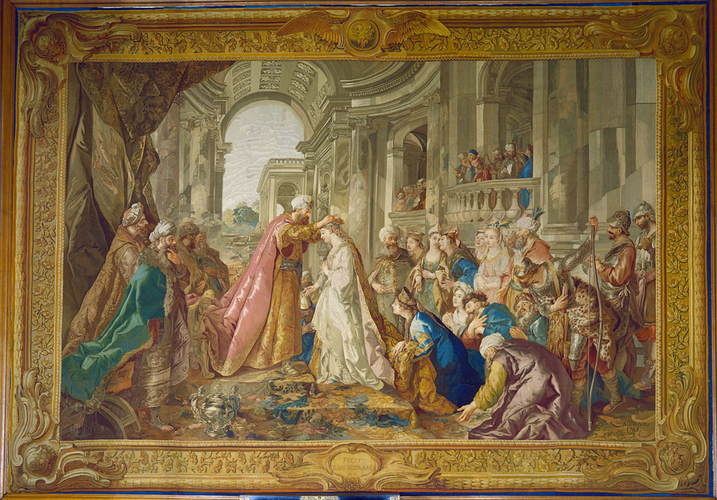Archived Stock - This item is no longer available
Tapestry Cartoon Depicting ‘The Coronation Of Esther’
19th Century Oil on Linen Painted Cartoon.
A significant 19th Century oil on canvas copy, at full size, of a Gobelins Tapestry depicting the Coronation of Esther.
SOLD OUT
In stock
One panel from a series of Gobelins tapestries depicting the History of Esther, illustrating King Ahasuerus placing a crown on Esther's head, both on the steps of a carpeted dais with the court in attendance and musicians playing on a balcony. The story of Esther is contained within the Book of Esther and is the basis of the Jewish festival of Purim.
The original tapestries, of which this is a painted copy, were woven in the workshop of Pierre-François Cozette after a design by J.F.de Troy. Seven such panels are now in the Royal Collection. A number of sets of this series were woven at the Gobelins between 1738 and 1794. The tapestries now at Windsor were among the last to be put on the looms and thus they incorporate the late borders designed by M. Jacques in 1773.
Completed by 1789, they remained in store up until July 1797 when they were sold during the revolutionary sales to the citoyen Chapeaurouge, agent of the Commission des Subsistances in Hamburg. They next reappear in Paris in May 1825 when Sir Charles Long bought them for George IV.
The tapestry itself was sold during the sales which followed the 1792 rebellion to a Citoyen Chapeaurouge, agent of the Commission des Subsistances in Hamburg. It was later purchased in Paris in May 1825, along with 37 other pieces of Gobelins tapestry, by Sir Charles Long (later Lord Farnborough) on behalf of George IV.
Copies of the tapestries (such as this) were later made and most surviving cartoons, whether original and intended for use or decorative copies, are 19th century (many of the badly stored 18th century Aubusson cartoons were destroyed in a flood).
The majority of surviving earlier cartoons are documented and held in museums and archives, such as is the case with the Beauvais and Gobelins examples at the Mobilier National. The colours used in, and quality of, this cartoon have led experts in the field to believe it of some significance.
Recently Viewed Items
-

A rare George III pine and composition doorcase
£14,250A rare George III pine and composition doorcase
the triangular pediment with reeded soffit, dentil mouldings and repeated ogee brackets, the endblocks applied with painted composition relief-cast urn motifs, raised on fluted columns with reeded capitals and square footblocks; the back-board cut with an arched aperture,£14,250

